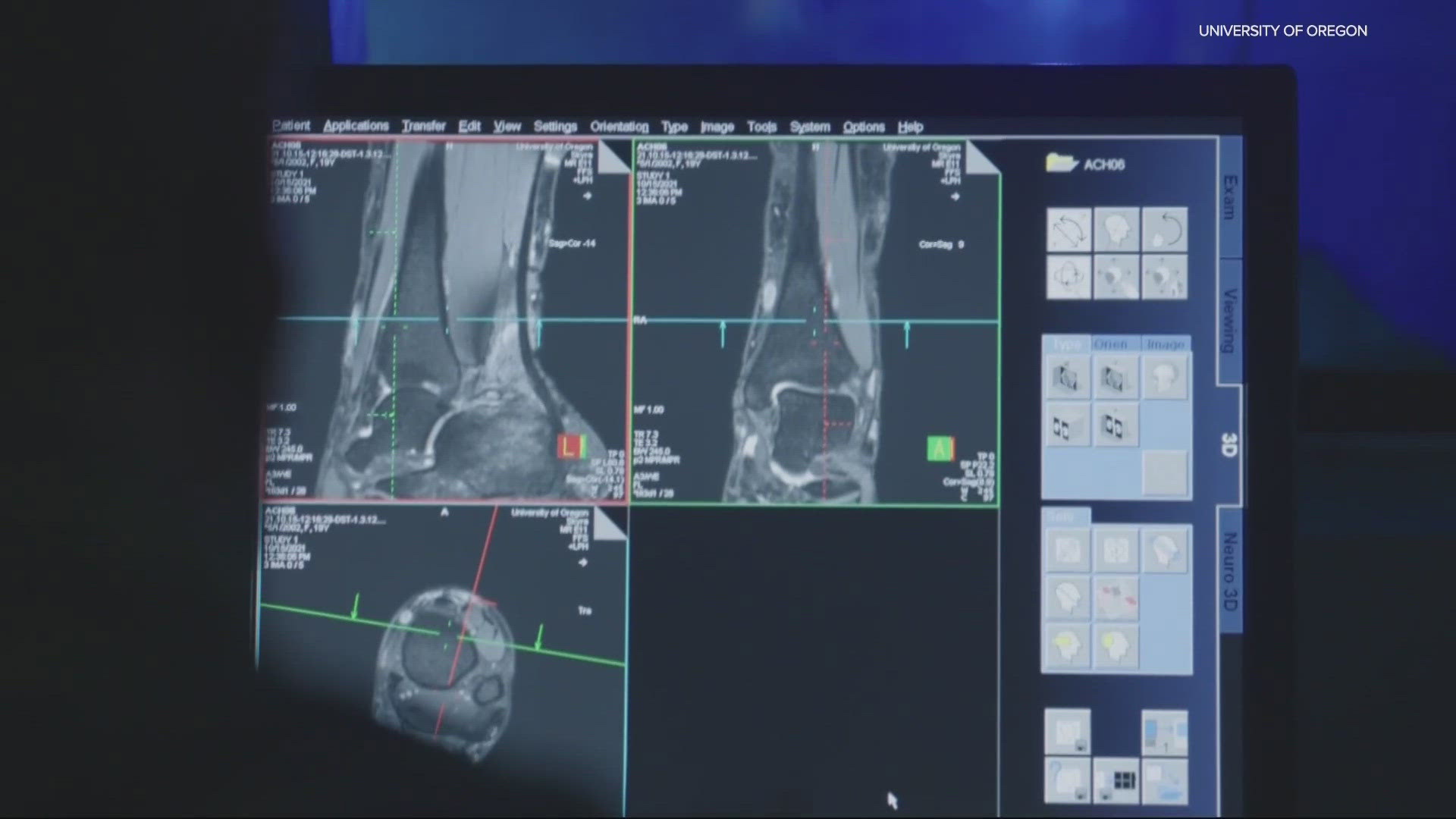EUGENE, Ore. — Injuries are often a concern for athletes, but knee injuries are particularly an issue for women and can be career-ending for athletes.
"Female athletes, depending on the source that you read, are two to eight times more likely to have an ACL ruptured compared to their male counterparts," said Damien Callahan, an assistant professor at the University of Oregon.
"People have a wide variety of potential explanations for this difference but there isn’t really a condensed, concise explanation that would lend itself to treatments," he added.
To fix this, Callahan wants to better understand that difference between men and women, to see if anything can be done to better protect female athletes.
"We’re interested in exploring some of the biomechanical and cellular differences in muscle and tendon tissues that might be explaining some of these differences and give us some potential better treatment options or training that can perhaps improve outcomes for female athletes," Callahan explained.
But he's not starting at Hayward Field, instead Callahan and his team are focused on the cellular level. His work is supported by the Wu Tsai Human Performance Alliance.
Small, clear vials are lined up and labeled inside the lab. Within the tubes are tissue from a human leg.
"We parse out the tissue into these little bundles," Callahan said
He uses tweezers to pull the almost translucent looking piece into view. The samples in his lab come from willing donors like Jackie Sher, who's an athletic trainer for the UO Track and Field team and one of about 20 people who have donated a small part of their body to the study.
Callahan said the participants need to be exercising frequently, at least one to two hours a day, six days a week to qualify for the study.
"Just a couple little millimeters," Sher said pointing to the outside of her thigh. "From the vastus lateralis."
"It was really good a few hours in the lab, but a lot of help to Damien's research," she added.
After putting the participant through demanding knee exercises, they take a biopsy from the leg muscle. These exercises are critical to help the researchers understand how fatigue impacts the muscle overall.
"Injuries happen when people are fatigued, they don’t happen when you're on the bench," Callahan explained. "They happen when you’ve loaded the muscle, playing for a while and the tissue is perhaps in a different state."
While this research helps Sher better understand how her own body works, she said it's even more valuable for her athletes. Sher hopes this research is the basis for improved training in the future.
"Then I can say, 'hey', to our athletes, 'this has been studied, these are the real responses. It's not propaganda that’s been shown somewhere online, but it's actual evidence of how they can be a better athlete,'" she said.
It's tedious work tracking how muscle fibers react under different circumstances, but so far, they've come to at least one conclusion.
"Our studies have revealed changes in tendon compliance are pretty dramatic in male athletes but somewhat blunted in female athletes," Callahan said.
Essentially, when male muscles are fatigued, or tired, they are less stiff. But female muscles don't' change very much. Callahan said it's not exactly clear how this relates to injury risk.
"They don’t have the sort of dynamic response to load the way that males do," he said. "It's really fun to be at the forefront of trying to discover some of these interactions."
Female athletes are a critical part of these discoveries, giving part of their own tissue to the effort. Callahan said many are excited to be part of it.
"I think they have a vested interest in the outcome," he added. "There is a decades and centuries long sex disparity in biological biomedical research."
Sher agrees, saying it's time to better support female athletes, and this is one way to do it.
"It's huge and just recognizing that they’re coming into the spotlight, people are encouraged and want to understand the female athlete way better," Sher added.

